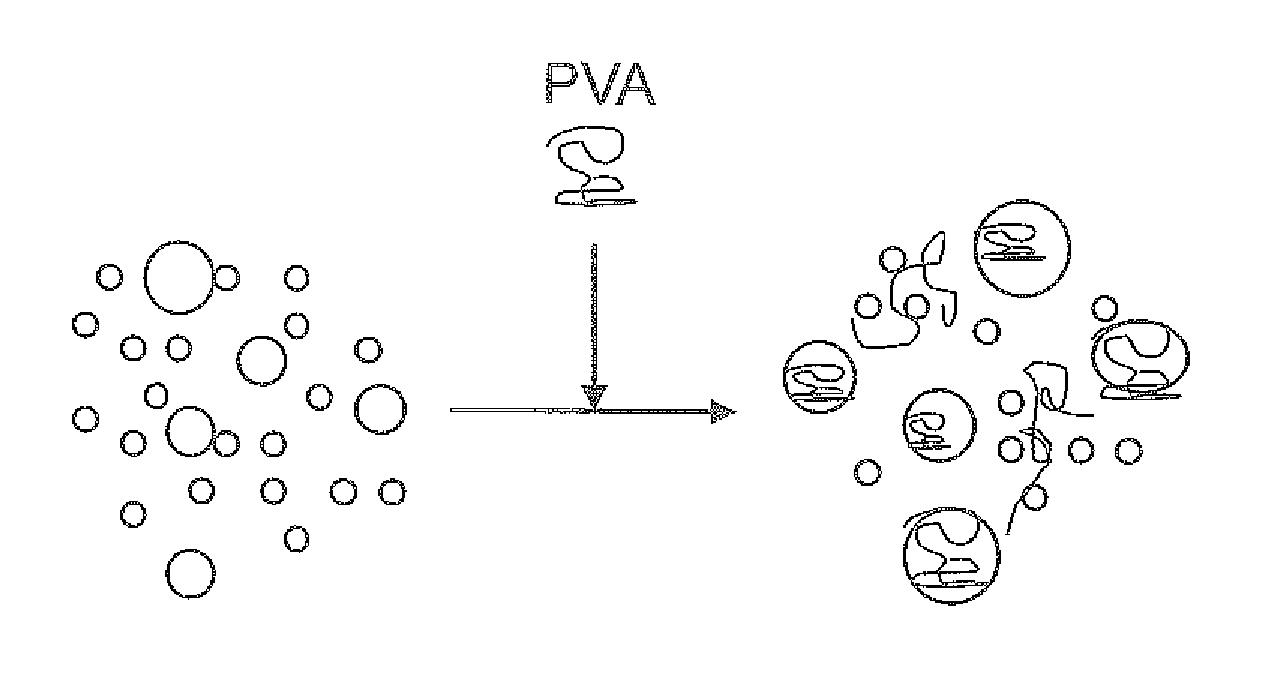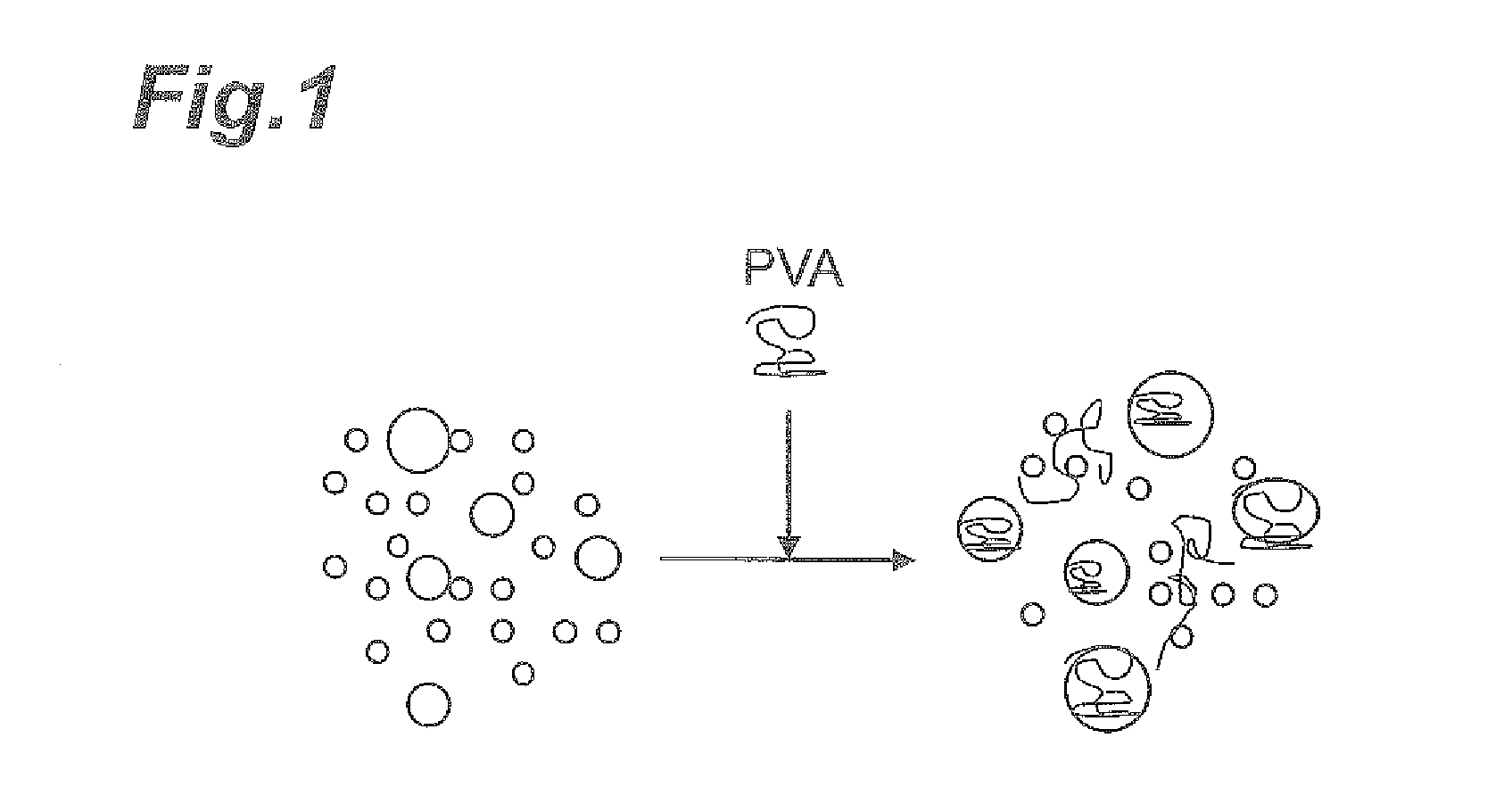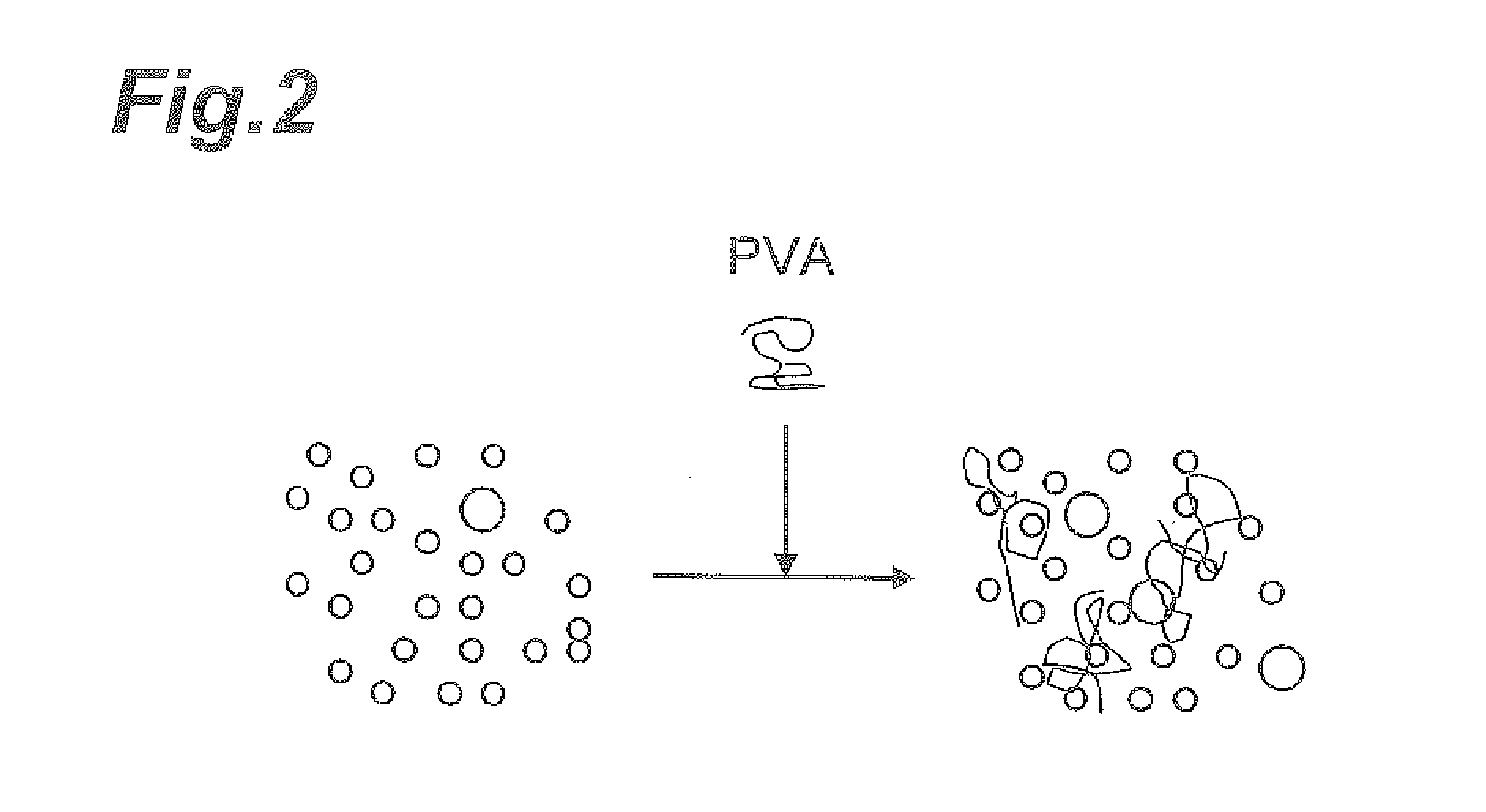Slurry, polishing-solution set, polishing solution, substrate polishing method, and substrate
- Summary
- Abstract
- Description
- Claims
- Application Information
AI Technical Summary
Benefits of technology
Problems solved by technology
Method used
Image
Examples
examples
[0188]Hereinafter, the present invention will be described in detail with reference to Examples, but the present invention is not limited thereto.
[0189](Preparation of Abrasive Grains Including Hydroxide of Tetravalent Metal Element)
[0190]Abrasive grains including a hydroxide of a tetravalent metal element were prepared in accordance with the following procedure. It is to be noted that the values represented by A to G in the explanation below are values shown in Table 1, respectively.
examples 1 to 14
[0191]A [L] of water was charged in a container, and B [L] of cerium ammonium nitrate aqueous solution having a concentration of 50 mass % (formula Ce(NH4)2(NO3)6, formula weight 548.2 g / mol, manufactured by NIHON KAGAKU SANGYO CO., LTD., product name 50% CAN liquid) was added and mixed. After that, the liquid temperature was adjusted to C [° C.] to obtain a metal salt aqueous solution. The metal salt concentration of the metal salt aqueous solution was as shown in Table 1.
[0192]Next, an alkali species shown in Table 1 was dissolved in water to prepare E [L] of an aqueous solution having a concentration of D [mol / L], and then, the liquid temperature was adjusted to a temperature of C [° C.] to obtain an alkali liquid.
[0193]The container containing the above-described metal salt aqueous solution therein was placed in a water tank filled with water. The water temperature of the water tank was adjusted to the temperature represented by C [° C.] in Table 1 using an external-circulating ...
example 15 to 19
[0195]A [L] of water was charged in a container, and B [L] of cerium ammonium nitrate aqueous solution having a concentration of 50 mass % (formula Ce(NH4)2(NO3)6, formula weight 5482 g / mol, manufactured by NIHON KAGAKU SANGYO CO., LTD., product name 50% CAN liquid) was added and mixed. After that, the liquid temperature was adjusted to C [° C.] to obtain a metal salt aqueous solution. The metal salt concentration of the metal salt aqueous solution was as shown in Table 1.
[0196]Next, an alkali species shown in Table 1 was dissolved in water to prepare E [L] of an aqueous solution having a concentration of D [mol / L], and then, the liquid temperature was adjusted to a temperature of C [° C.] to obtain an alkali liquid.
[0197]The container containing the above-described metal salt aqueous solution therein was placed in a water tank filled with water. The water temperature of the water tank was adjusted to the temperature represented by C [° C.] in Table 1 using an external-circulating d...
PUM
 Login to View More
Login to View More Abstract
Description
Claims
Application Information
 Login to View More
Login to View More - R&D
- Intellectual Property
- Life Sciences
- Materials
- Tech Scout
- Unparalleled Data Quality
- Higher Quality Content
- 60% Fewer Hallucinations
Browse by: Latest US Patents, China's latest patents, Technical Efficacy Thesaurus, Application Domain, Technology Topic, Popular Technical Reports.
© 2025 PatSnap. All rights reserved.Legal|Privacy policy|Modern Slavery Act Transparency Statement|Sitemap|About US| Contact US: help@patsnap.com



